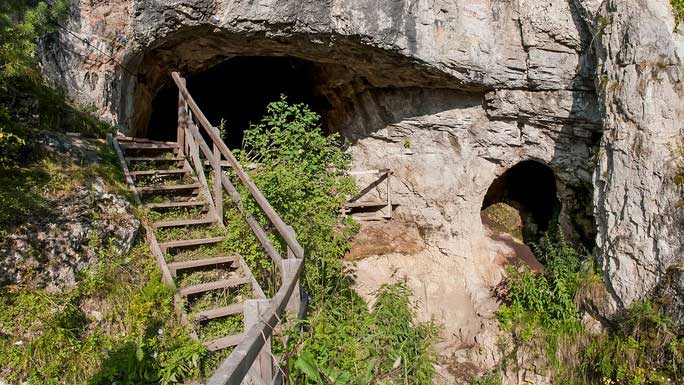Researchers have identified four regions that could be considered ancient “paradises,” where our two distant ancestors – the Neanderthals and Denisovans – coexisted and interbred.
The interaction between species, including Neanderthals and Denisovans, or either of those species with Homo sapiens (us), played a crucial role in shaping the human form we see today, even though they are now extinct.
Neanderthals and Denisovans are two species closely related to us, having gone extinct around 30,000 years ago. In Europe, Neanderthals frequently interbred with our ancestors, while the “romance” between Denisovans and Homo sapiens was primarily concentrated in Asia.

Denisova Cave, a famous paleoanthropology research site in Siberia, Russia, where many other human remains have been discovered – (Photo: SCIENCE).
However, the interbreeding between these two ancient species belonging to the genus Homo seems more challenging. They lacked the adaptability that we possess, which often led their communities to be isolated in certain environmental conditions.
The Denisovans dominated very cold regions such as the northern forests and tundras of Asia and Europe, while Neanderthals preferred the temperate forests and grasslands of the Southwestern world.
According to Sci-News, a new study published in the journal Science indicates that it was the shifts in Earth’s orbit that created overlapping environments during distinct periods over the past 400,000 years.
This environmental overlap brought the two ancient species closer together, leading to instances of interbreeding.
The regions of Central Asia-Europe, the Caucasus (located at the boundary of Asia and Europe, encompassing parts of Georgia, Azerbaijan, Armenia, and a portion of southern Russia today), the Tian Shan Mountains (China), and the Changbai Mountains (the natural boundary between China and North Korea) have been identified as four of the natural “cradles” of ancient hybrid humans.
Additionally, the Altai region of Siberia, Russia, may have experienced environmental overlap up to three times throughout history, with each phase lasting tens of thousands of years.
This was discovered by a group of scientists from the Basic Science Institute and Busan National University (South Korea), Federico II University of Naples, the University of Florence, and the University of Molise (Italy) through changes in ancient carbon dioxide levels preserved in sediments.
This aligns with several archaeological pieces of evidence suggesting that these two species did indeed interbreed, including the discovery of several hybrid fossils identified in Russia.
The findings highlight the impact of the environment on human evolution while also providing further explanation for our own changes.
Increasing scientific evidence shows that modern humans inherit many genetic gifts from these distant ancestors, directly related to health and the risk of certain diseases.




















































